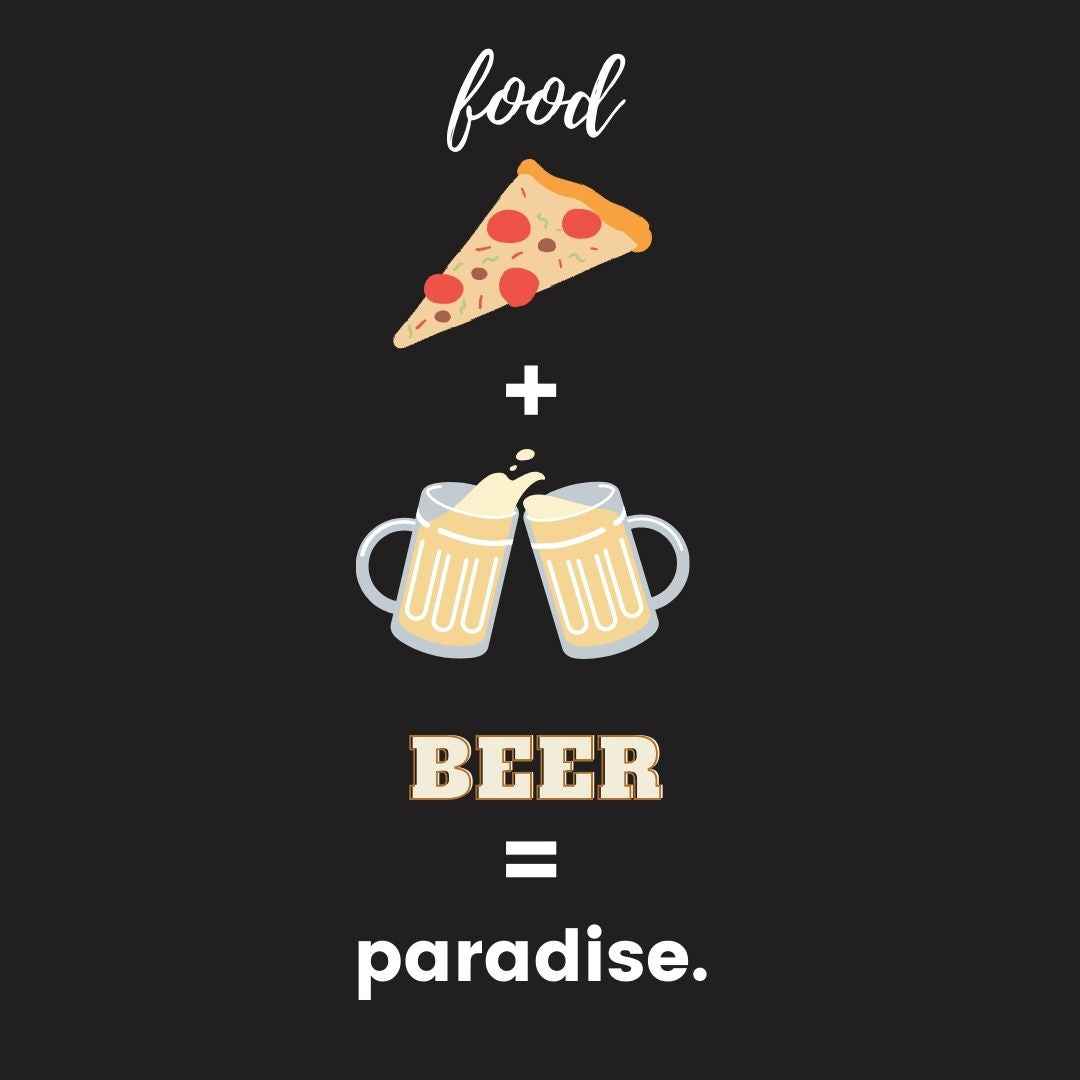Creating a culinary experience: how to pair your craft beer with any meal.

With an endless list of varieties, craft beer is taking the fine dining world by storm by replacing traditional wine for meal pairings. Anywhere you can use wine, you can use beer, often to a better effect. The bread-like base and carbonation of beer compliments a wide variety of flavours, making it a perfect addition to nearly any meal. By knowing some key words and following a few simple guidelines, you can find the perfect beer to compliment any meal.
When describing the taste of beers, you’ll often hear the same key words tossed around. Words such as hops, bitter, malt, dark and light. Each of these words work together to describe the taste and different flavour notes that can be found in the beers you’re consuming. It’s important to pay attention to these words when tasting beers, in order to determine which beers work best for your specific flavour palate.
There aren’t many hard rules that stand when it comes to food and beer pairings, since not many flavours clash with beer. However, if you’re looking to get the most out of your culinary experience, be mindful of a few simple guidelines when choosing which beer to match your meal.
The first guideline revolves along contrast. In order to create an ideal pairing, pick a beer or dish with one dominant flavour. You want the chosen dishes distinct taste to shine without being overpowered. Next, focus on complimenting flavours. Match rich foods with beers that have heavy rich flavours, like stouts and porters. Or light tasting salads and fish with lighter, bright flavoured beers. You can also use your beer as a palate cleanser. This type of food pairing is best for strong overpowering flavours, such as Indian foods or fatty fried foods. An example would be using a crisp light beer to wash down the heat of a spicy, flavourful dish. The final guideline to be mindful of when choosing your pairing is to avoid overpowering flavours. Many medium and dark beers have a rich flavour that can overpower a lighter dish.
Now that we’ve covered the key words and general guidelines, it’s time to get into some suggestions! Below you’ll find a few types of beers and the foods they're best paired with, according to beer experts.
Pilsner: Bread, seafood, cheese, salty snacks
The buttery characters found in the complexity of a well-brewed pilsner often makes dishes seem richer, while the hop notes brighten up otherwise simple flavours. Rich seafood dishes such as caviar or even escargot make for an amazing pilsner experience.
Light Lagers: Spicy food, burgers, salads
Among the palest of beers, the crisp and refreshing notes pair best with spicy foods. However, due to their light and simple flavour, these lagers can be paired with just about any food.
Wheat Beers: Spicy food and fruity desserts
Brewed with a mix of wheat and barley grains, these beers are often smooth with lighter carbonation. These versatile beers can be paired with a number of dishes, but some of the best are pastries such as fruit tarts and spicy noodle dishes with citrus or similar flavour notes.
India Pale Ales (IPA): Steak, barbecue, Mexican food
Typically, IPAs feature a bitter flavour that often has tones of herbal or citrus that makes the beer more palatable. With bright citrusy notes tied into the bitterness of IPAs, the most popular pairings are often barbequed ribs, steaks, burritos and fajitas.
Amber Ales: Pizza, fried food, smoked pork
Characterized by their colour, these beers often have a strong flavour of malt often followed by notes of sweet caramel. These beers have a crisp and dry finish, making them excellent palate cleansers. Ideal pairings include: pizza, jerk chicken and briskets.
Dark Lagers: Pizza, burgers, hearty stews
Of all the lagers, dark lagers have one of the most distinct flavours. Made with roasted malts, these beers offer a slight sweetness and nuttiness while not being overpowering. Dark lagers are very popular in Europe, making them a perfect pairing for hearty traditional dishes such as: sausages, goulash, bangers and mash, burgers and pizza.
Brown Ales: Sausage, sushi, fish
Compared to most medium-coloured beers, brown ales aren’t very hoppy or bitter. These beers carry a dry and nutty flavour and are considered very versatile, making them a proper pairing for foods such as: sausages, roast pork, fish, barbecue and even sushi.
Porters: Seafood, coffee-flavored desserts, game meats
Considered dark and strong, porters come in a variety of styles, all carrying signature toasty aromas and roasted flavours. Being made with roasted malts, porters carry strong notes of chocolate, caramel and coffee. Carrying deep and rich flavours, porters pair best with foods that have similar taste and texture, such as: lobster, crab, rabbit and venison.
Stouts: Chocolate desserts, shellfish, Mexican food
Best known for their black colour and dark roasted flavours, stouts are characterized by strong hints of chocolate and coffee. While both porters and stouts are thick and silky, stouts have a richer chocolatey flavour that makes them the perfect pair for the foods such as: chocolate truffles, chocolate mousse, lobster, barbecue and shellfish.
Sours: Fruit dishes, Asian cuisine, fresh flavours
Most often people who are sipping sours are not out dinning, they’re usually enjoying a night out with friends. This beer is often best paired with light and fresh flavours, such as fish dishes and fresh roasted tomatoes with garlic. The bubbly, slightly sour flavours compliment light, savory flavours.
In order to create the best beer pairings possible, it is important to understand which flavours work best together. By being knowledgeable of the different flavour profiles of beer, you can create unique experiences through delicious food pairings. So grab a unique pint at your favourite brewery, and make your next night date night in a culinary experience to remember.
